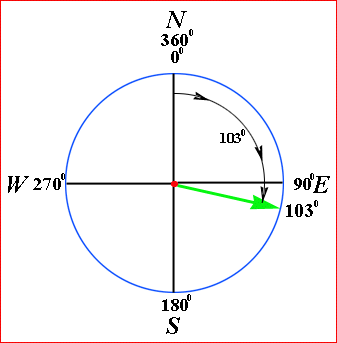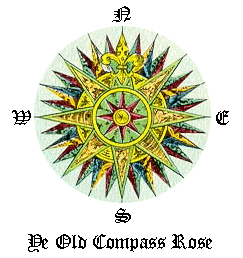 | "There's a reason for the numbers, Lou! 'North', 'south', 'east' and 'west', and 'northeast', 'southeast', and so on are OK as names without numbers! But all the directions in between them are too vague! The names need numbers attached to them!
Look at the diagram! Consider the direction in which the green arrow is pointing. To get its azimuth, you measure the angle it makes with 0°. That angle is 103°! That's pretty easy, isn't it??!!" |  |


